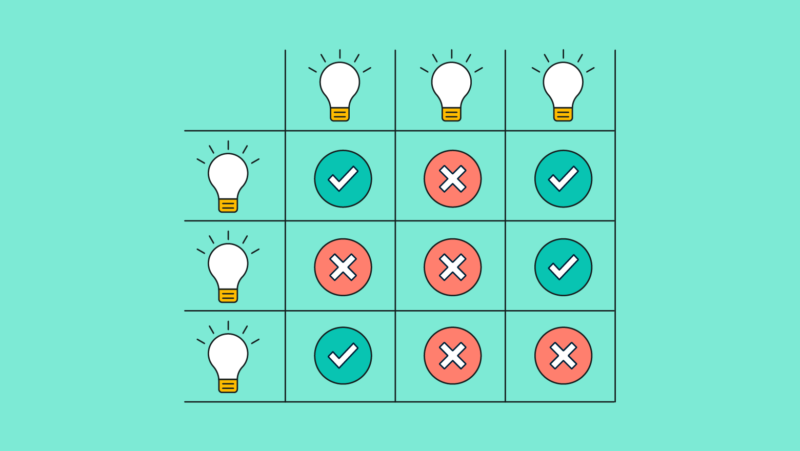Digital marketing is an ever-evolving field that demands strategic planning and careful budget allocation. For growing businesses, understanding how to effectively distribute funds across various digital marketing channels can be the difference between thriving and merely surviving.
In this comprehensive guide, we’ll explore ten essential tips for building an effective digital marketing budget. These insights are designed to help businesses of all sizes maximize their online presence, ensuring each dollar spent contributes to sustainable growth.
1. Understanding Your Audience
1.1 Identifying Your Target Market
Before diving into budget allocation, it’s crucial to understand who your target audience is. Researching and identifying the demographics, interests, and online behaviors of your potential customers is the first step in crafting a successful strategy. This understanding will guide your decisions on where to allocate resources most effectively.
1.2 Analyzing Audience Behavior
Once you’ve identified your target market, delve deeper into their online habits. Which platforms do they frequent? What type of content resonates with them? This information is vital in determining the channels and types of digital marketing that will yield the best return on investment (ROI).
2. Setting Clear Objectives

2.1 Defining Marketing Goals
Clear, measurable goals are the foundation of any effective budget. Whether it’s increasing brand awareness, generating leads, or boosting sales, your objectives should guide your spending decisions. Ensure these goals are Specific, Measurable, Achievable, Relevant, and Time-bound (SMART).
2.2 Aligning Budget with Goals
With your goals in place, align your budget to prioritize the tactics most likely to achieve them. If you aim to increase website traffic, for instance, allocating more funds to SEO and pay-per-click (PPC) advertising might be more beneficial than social media.
3. Embracing Flexibility in Budgeting
3.1 Adapting to Market Changes
The digital landscape is constantly changing, and so should your budgeting strategy. Be prepared to shift funds between channels as new trends emerge and consumer behaviors evolve. Staying flexible allows you to capitalize on unforeseen opportunities and mitigate risks.
3.2 Regular Budget Review
Regularly review your budget to ensure it aligns with current market conditions and business goals. This periodic evaluation allows for timely adjustments, ensuring your marketing efforts remain efficient and effective.
4. Prioritizing High-Return Channels

4.1 Evaluating Channel Performance
Not all channels are created equal. Assess the performance of each channel you’re using – SEO, PPC, social media, email marketing, and others – to understand where you’re getting the best ROI. This evaluation helps in prioritizing budget allocation.
4.2 Focusing on What Works
After identifying your high-return channels, focus your budget on these areas. It’s more effective to allocate resources to proven strategies than to spread your budget too thinly across multiple channels.
5. Leveraging Data-Driven Decisions
5.1 Utilizing Analytics Tools
Data is a powerful tool in digital marketing. Utilize analytics tools to gain insights into customer behavior, campaign performance, and more. This data-driven approach ensures your budgeting decisions are grounded in reality rather than guesswork.
5.2 Refining Strategies Based on Insights
Use the insights gained from data analysis to refine your marketing strategies and budget allocation. Adjusting your approach based on real-world performance data enhances the effectiveness of your efforts.
6. Balancing Organic and Paid Strategies

6.1 Understanding Organic vs. Paid
A balanced budget includes both organic (SEO, content marketing) and paid (PPC, social media ads) strategies. For instance, incorporating a specialized SEO approach like SEOYork can enhance your organic reach, providing long-term value. Understanding the strengths and limitations of each strategy, including niche techniques like SEOYork, will help you determine the right mix for your business.
6.2 Finding the Right Mix
The ideal balance between organic and paid strategies varies depending on your industry, audience, and goals. Experiment with different mixes to find what delivers the best results for your business.
7. Investing in Content Marketing
7.1 The Power of Quality Content
Content marketing is a crucial element. Investing in high-quality, relevant content not only boosts SEO but also engages and educates your audience, building trust and brand loyalty.
7.2 Diversifying Content Formats
Diversify your content formats – blogs, videos, infographics, podcasts – to appeal to a broader audience. Different formats can attract different segments of your audience and can be used across various digital platforms.
8. Considering Long-Term and Short-Term Strategies

8.1 Balancing Immediate and Future Goals
Your digital marketing budget should balance short-term tactics that yield immediate results with long-term strategies that ensure sustainable growth. For instance, while PPC can generate quick sales, SEO builds a solid foundation for future success.
8.2 Planning for the Future
Allocate a portion of your budget to long-term strategies like brand building and audience engagement. These investments may not yield immediate returns but are crucial for the long-term health and growth of your business.
9. Allocating Budget for Experimentation
9.1 The Importance of Testing New Strategies
In the rapidly changing digital world, it’s important to allocate a portion of your budget for experimenting with new strategies and technologies. This ensures your business stays ahead of the curve and discovers potentially lucrative new channels.
9.2 Learning from Experimentation
Use these experiments to learn what resonates with your audience and what doesn’t. Even unsuccessful tests provide valuable insights that can inform future budgeting and marketing decisions.
10. Tracking and Measuring Success

10.1 Implementing Tracking Tools
To understand the effectiveness of your digital marketing efforts, implement tracking tools across all your campaigns. This enables you to measure success against your goals and provides a clear picture of your ROI.
10.2 Using Metrics to Guide Decisions
Use the metrics from these tools to guide future decisions. Continuously optimize your marketing budget based on what the data tells you, ensuring every dollar spent contributes to your business goals.
Conclusion
In conclusion, building an effective budget requires a strategic approach, grounded in a deep understanding of your audience, market trends, and business goals. By following these ten tips, growing businesses can ensure their digital marketing efforts are not only cost-effective but also powerful drivers of growth and success.
Remember, the key to an effective digital marketing budget lies in its flexibility and responsiveness to change. Stay agile, keep learning, and watch your business thrive in the digital landscape.
Related Posts:
- 10 Effective Ways to Crush Your Competition with…
- Innovative Digital Marketing Strategies for Product…
- Is the PTE Exam a Challenge? Effective Preparation…
- 12 Tips for Planning a Team Building Event: Expert…
- Becoming a Celebrity: Social Media Management Tips…
- Revolutionizing Your Digital Space: 10 Tips for…













